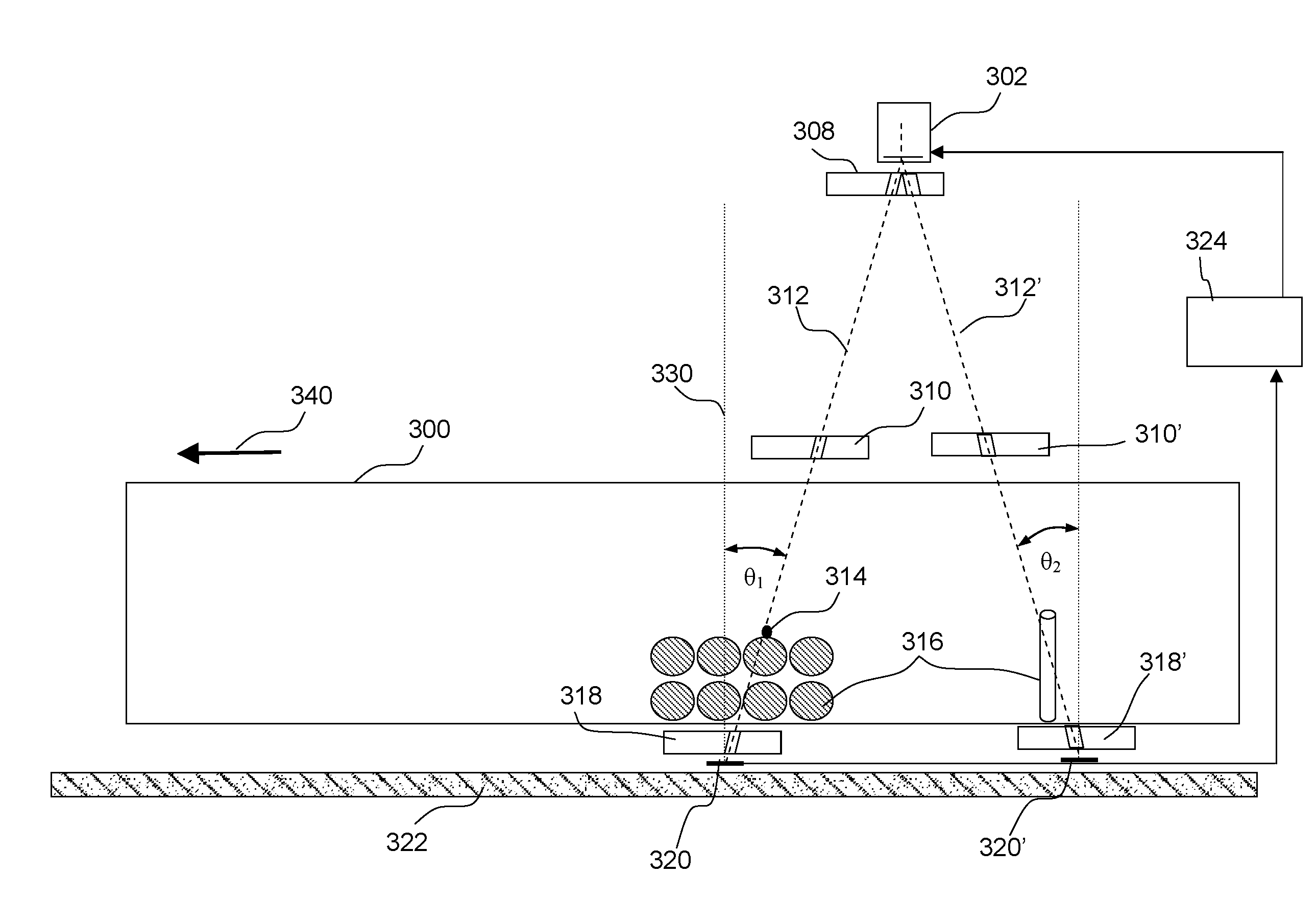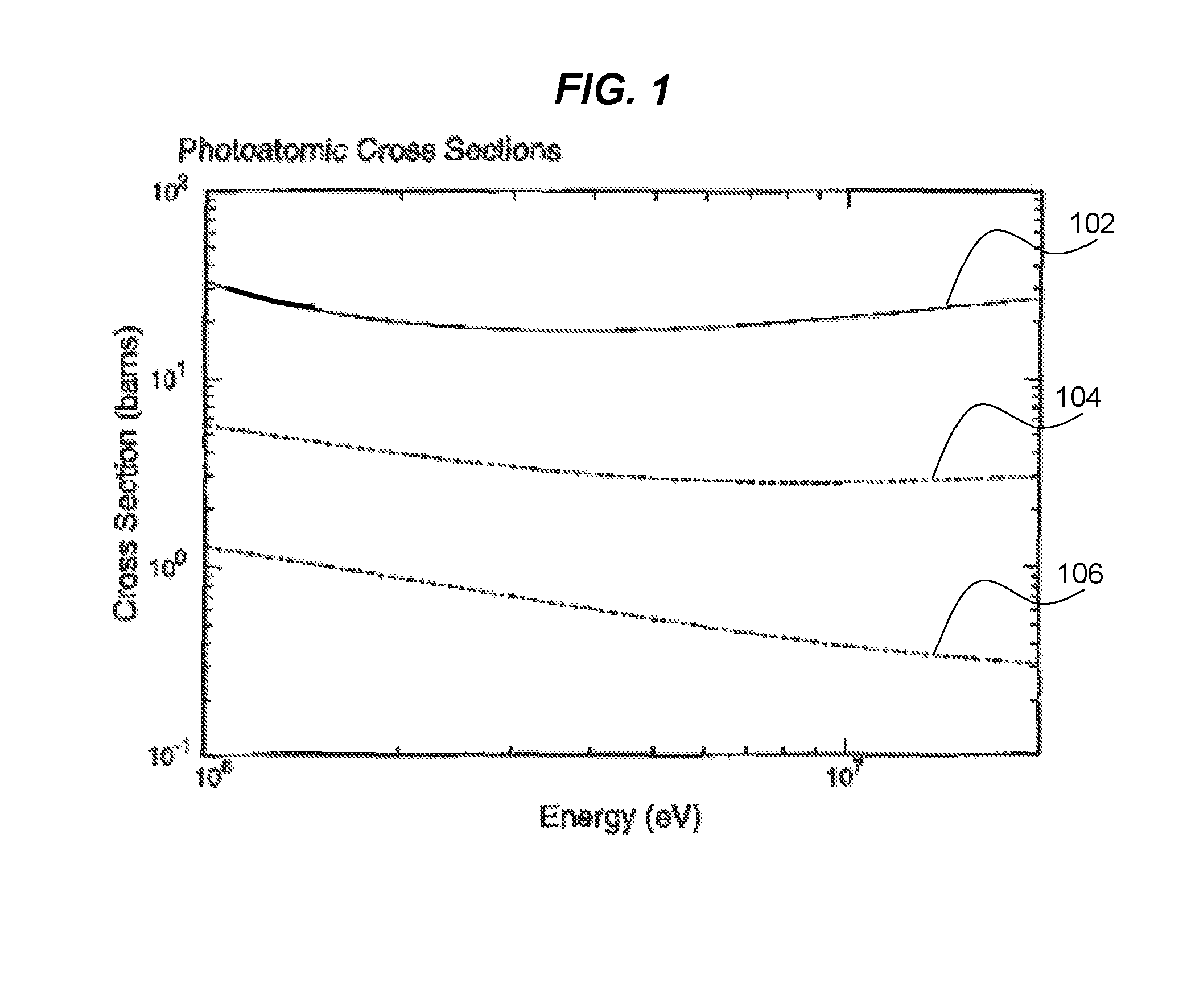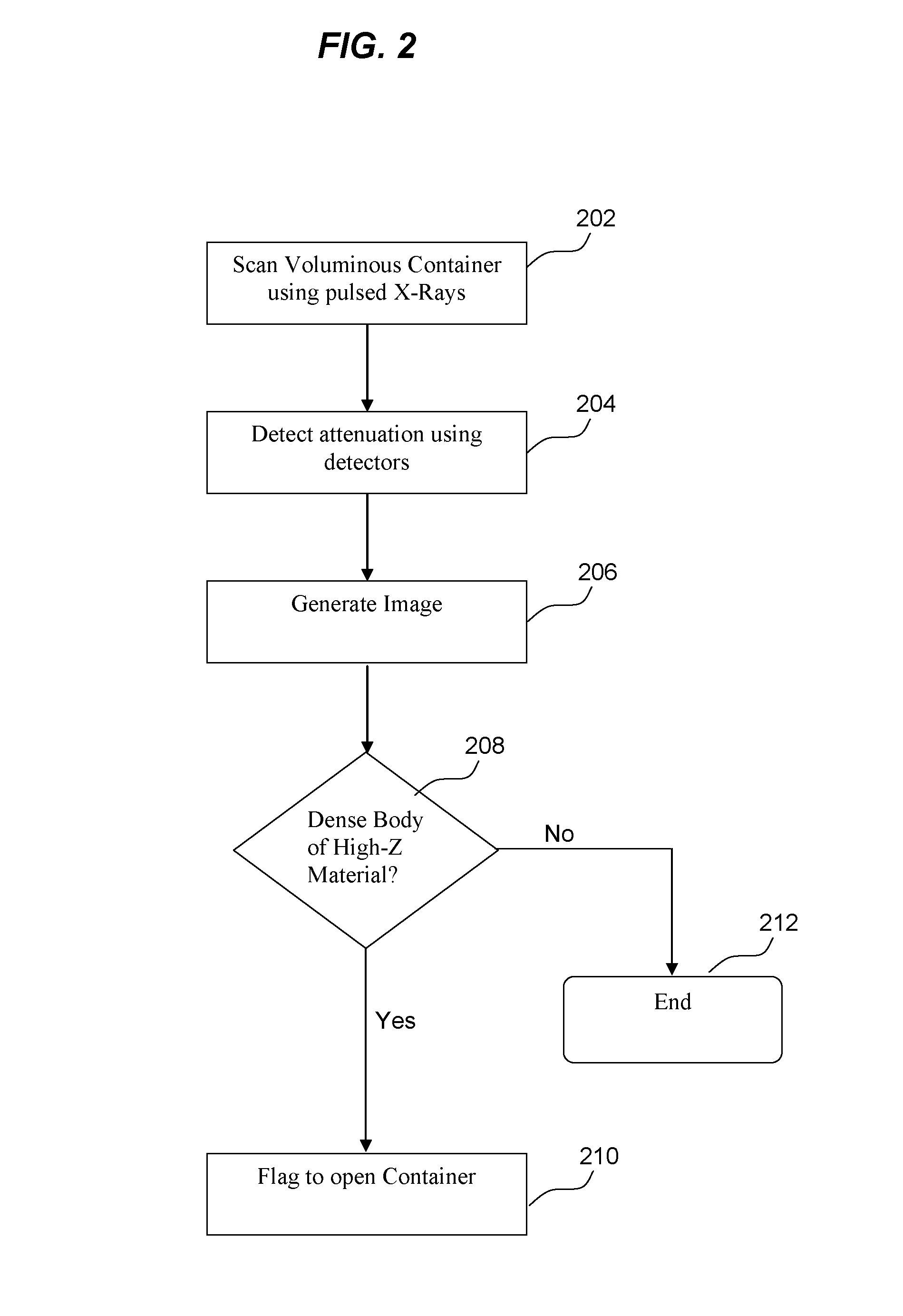X-ray radiography for container inspection
- Summary
- Abstract
- Description
- Claims
- Application Information
AI Technical Summary
Benefits of technology
Problems solved by technology
Method used
Image
Examples
example 1
[0042]FIG. 5 is a computer model radiographic image obtained by detecting a 5 kg sphere of 6-plutonium (r=0.0422 m) at the center of a container uniformly filled with iron to a density of 300 kg / m3. This model is based on using an X-ray source is a beam of 10 MeV electrons which radiate bremsstrahlung when stopped by a 7 mm thick tungsten converter slab at a height of 5.2 m above the top of the container using a layout as shown in FIGS. 3A and 3B. Below the converter there is a 10 mm wide slot collimator made of tungsten 0.1 m thick. A similar slot collimator above the container matches a 10 mm wide detector array. The detectors are modeled as a transverse row of point sensors 0.2 m below the container, spaced 10 mm apart, which respond to the X-ray energy flux, a fair approximation to the behavior of several practical scintillators. A final Bucky collimator between the container and the detectors consists of a 0.16 m thick slab of tungsten with holes of 5 mm diameter bored along th...
example 2
[0044]Many containers will contain pockets of innocent dense medium-Z material (large castings such as engine blocks, ingots, rod stock, etc.), and a terrorist may fill the empty space in a voluminous container with such objects in order to disguise a dense piece of fissionable material. Radiography must identify, or exclude the presence of, a threat in such a cluttered environment. FIG. 6 therefore shows the radiograph of a 5 kg sphere of 6-plutonium (r=0.0422 m) at the center of a very cluttered container. In addition to the threat object, it contains 230 spheres of half-density iron that model an automotive engine block, with internal voids, each 0.20 m in radius, totaling 30 MT. The iron spheres arc in planar square arrays, 0.50 m apart, 0.55 m and 1.05 m below the container's midplane.
[0045]If the direction of irradiation were vertical the plutonium sphere would not be detectable because the line of sight through it would pass through the centers of two of the iron spheres, for...
PUM
 Login to View More
Login to View More Abstract
Description
Claims
Application Information
 Login to View More
Login to View More - R&D
- Intellectual Property
- Life Sciences
- Materials
- Tech Scout
- Unparalleled Data Quality
- Higher Quality Content
- 60% Fewer Hallucinations
Browse by: Latest US Patents, China's latest patents, Technical Efficacy Thesaurus, Application Domain, Technology Topic, Popular Technical Reports.
© 2025 PatSnap. All rights reserved.Legal|Privacy policy|Modern Slavery Act Transparency Statement|Sitemap|About US| Contact US: help@patsnap.com



